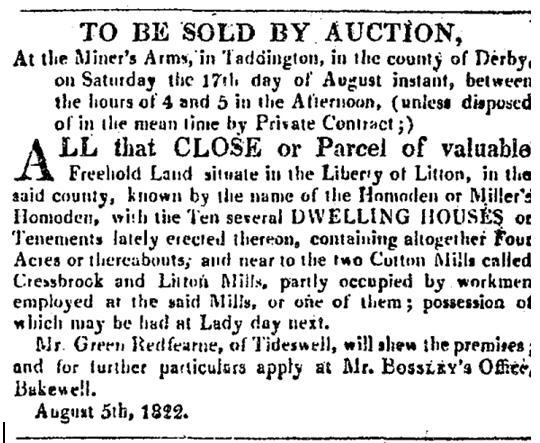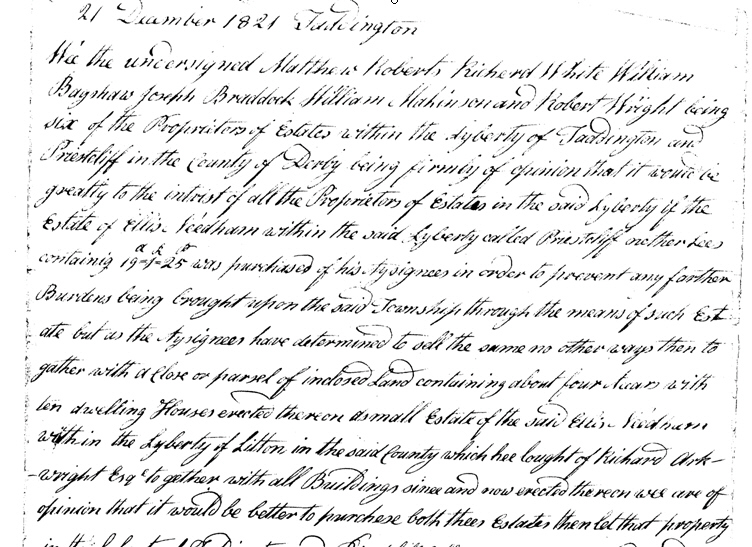Before 1796
1796 -1799
1800 - 1819
1820s
Late 19th Century
Litton Mill
Land Ownership
Slack & Mill
Connections
Living Conditions
Robert Blincoe
Censuses 1841 - 1891

In the early 1820s Littonslack is again for sale. As the sale appears to be from the "Assignees" it appears as though it remained unsold from 1818. See here
The advertisment (right) appeared in the Derby Mercury. Note that in this advertisment the Slack cottages are referred to as "Homoden or Miller's Homoden". Homoden is an old word for Hammerton and Hammerton Hill is the hill near which the cottages sit.
A document found in the Derbyshire County Records Office (see here for full transcript) and shown in part below contains the following....
“…the Assignees have determined to sell the same no other ways then to gather with a Close or parcel of inclosed land containing about 4 Acres with ten dwelling Houses erected thereon a small Estate of the said Ellis Needham within the lyberty of Litton in the said County which hee bought of Richard Arkwright Esq together with all Buildings since and now erected thereon.”
The paragraph above implies that these cottages are pre-existing and not “since … erected”. That is that they were sold to Ellis Needham by Richard Arkwright. The cottages are unlikey to be any other than Littonslack and at this time, apart from the apprentice house, there was little accommodation at Litton Mill (the 1841 census shows just 3 dwellings).
Associated with this document is the advertisment in the Derby Mercury (above).
So could the cottages have been built by Richard Arkwright - perhaps when he was speculating and investing in land along the rivers Wye and Derwent? Arkwright was initially at least interested in this area and built the original Cressbrook Mill in 1785.

The urgency by the local parishes of Litton and Tideswell to resolve this matter is driven by the potential burden that the parish's gain. If Needham's apprentices were turned out of the mill, then they did not return to their original Workhouses but automatically became the responsibility of the local parish. With Needham's apprentice house being built on the Taddington side of the river, the concern of the Taddington parish is understandable. A document, see here, shows that the apprentice house had by this time been pulled down and the stone sold.